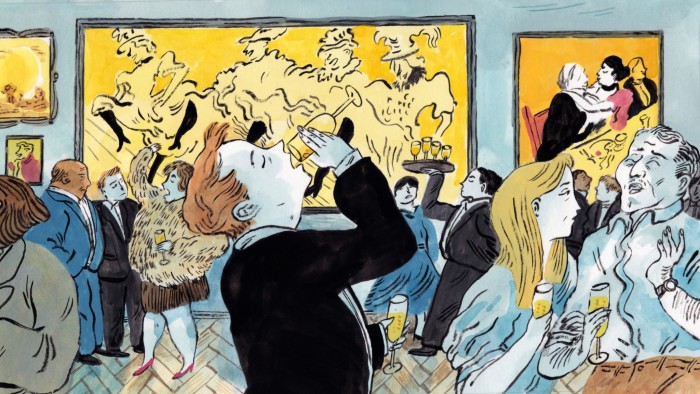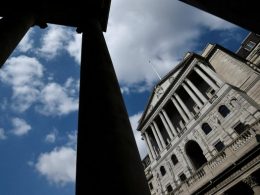Unlock the Editor’s Digest for free
Roula Khalaf, Editor of the FT, selects her favourite stories in this weekly newsletter.
I can remember the precise moment when I knew I wasn’t going to make it as an art dealer. It was in 2017, in the bar of Les Trois Rois hotel, on the opening night of Art Basel. By the time I hustled my way into the party, the air was thick with bespoke perfume and underdressed ambition.
An older American dealer I knew accosted me. Booze shimmered off him as he launched straight into a story from earlier that evening. Another dealer owed him a large sum of money — in the region of $1mn, he claimed — and had been slow to pay. When he knocked on his hotel room door, the debtor appeared wearing nothing but a confused look and a Rolex; behind him, a naked woman lay on the bed. He dolefully handed over a rumpled cheque, glanced at his watch and then at the woman. He turned back to my acquaintance: “Drink downstairs in 15 minutes?”
When the dealer had finished his tale, he put his arm around me and gestured to the crowded room. “This is what it’s all about, eh?” I was thinking exactly the opposite.
There are two things to know about the art world. First, it is driven by desire. No one needs art, after all: people are largely driven to own it to possess it themselves, but also, in my experience, out of a competitive urge for someone else not to. Second, the art market differs from other businesses in that its attitude to money is rather like the Victorians’ attitude to children. You see commerce everywhere — but nobody talks about it.
Art world parties are a way of sewing these two together: a place for gallerists, collectors and curators to peacock while tiptoeing around the elephant in the room. The effect is often seductive.
The twin peaks of nocturnal art world opulence are the Venice Biennale (every other April or May) and Art Basel Miami Beach (every December). Miami is not an art town; Miami is a party town, and each year the latter does the work of making up for the former. It’s like “spring break for plutocrats”, as one gallerist described it to me.
Venice is also a venue for great debauchery. The Biennale transforms the floating city into a frenzy of superyachts and Bellini-fuelled misbehaviour. Parties are secluded behind the walls of grand palazzos; often the only clue as to their existence is a lengthy queue to get in.
And people always want what they can’t have. One critic I spoke to told me about gatecrashing parties at the Bauer Hotel. “We used to shimmy along the back wall of the Bauer to sneak into Biennale parties that we weren’t on the list for. The wall faces directly on to the Grand Canal.” If you were lucky enough to make it to the other side, “you would do so with completely sodden shoes”. On departure, the writer was shocked to see a gallerist crouched over the bank of the Grand Canal. Unfortunately, the drinks that had caused such urinary urgency also meant that her balance was impaired and she tumbled backwards into the murky waters.
All this exuberance, though, is an opportunity to see these parties for what they really are. In my experience, and from reminiscing with friends and former colleagues, one truism rang out: no matter how many invitations you receive, the events are just not that enjoyable. It’s performative fun, simulations of the real thing — the social equivalent of Diet Coke.
Sure, the social life of the art world is a draw to many a lost and lonely rich kid. When I was a dealer, I met many of them. One New Yorker, not much older than me, seemed to have begun collecting in order to make friends. He came to dinners and parties and sometimes organised evenings of his own: an expensive restaurant dinner followed by the kind of nightclub where all the drinks seem to arrive with sparklers attached.
On one of those nights, I was grinding my teeth, wondering when I could leave when the collector and I locked eyes in the dark, flashing room. In that moment, we both realised something. I knew he wasn’t going to buy anything I was selling — and he knew I wasn’t going to be his pal.
Orlando Whitfield is a failed art dealer and the author of All That Glitters: A Story of Friendship, Fraud and Fine Art (Profile)
Find out about our latest stories first — follow FT Weekend on Instagram, Bluesky and X, and sign up to receive the FT Weekend newsletter every Saturday morning









